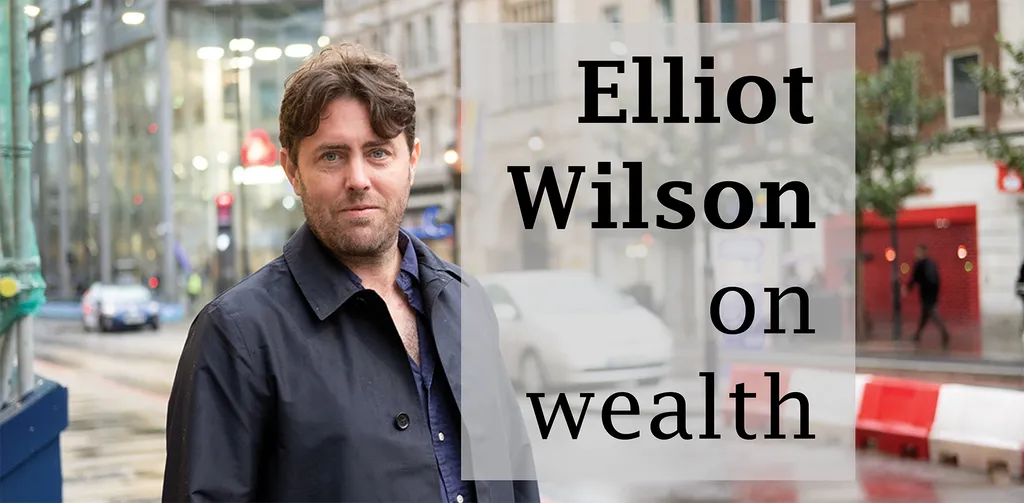In Peter Weir’s 1998 movie The Truman Show, Jim Carrey’s eponymous character’s epiphany that not all is real comes when he realizes the secondary characters that silently surround his ‘life’ are on a loop.
Truman ushers his wife Meryl, played with uncanny precision by Laura Linney, into the car and jabs his finger at the rear-view mirror. “I predict that in just a moment, we will see a lady on a red bike, followed by a man with flowers, and a Volkswagen Beetle with a dented fender,” he says.
When lo it comes to pass, he rejoices, then urges her to wonder how he knew. “They’re on a loop,” he explains. “They go round the block, they come back, they go round again. They just go round and round. Round and round.”
This scene came to mind when pondering the collapse of Credit Suisse, its subsequent rapid-fire rescue by UBS, and the way assets flow in, through and around the network of private banks – both pure-play and those that are part of full-service lenders – that manage so much of the wealthy world’s money.
Early in the fourth quarter of 2022, many wealthy families clearly felt something was amiss at Credit Suisse – turns out they were right. Two-thirds of all net asset outflows in the period were concentrated in October, the bank later admitted.
That number stabilized somewhat, but the group still posted a net asset outflow of SFr110.5 billion ($118.9 billion) in the final three months of 2022, against an outflow of SFr12.9 billion the previous quarter and an inflow (net new assets) of SFr1.6 billion a year earlier.
Main rivals
Now drape those numbers over those reported by its main rivals and see what happens. UBS generated $60 billion in net new fee-generating assets in 2022 and $23.3 billion in the fourth quarter, as clients “turned to us for advice and stability”, group CEO Ralph Hamers pointedly said when announcing full-year results.
Julius Baer, the independent private bank whose head office on Zurich’s Bahnhofstrasse stands a stone’s throw from Credit Suisse’s on Paradeplatz, posted second-half net new money of SFr9.8 billion, handily reversing a first-half outflow.
Deutsche Bank recorded net inflows into assets under management (AUM) in the final three months of €5 billion ($5.36 billion), a number that slightly underwhelms, given the backdrop, and set against a full-year net inflow of €30 billion.
Further afield in Singapore, DBS’s wealth management division posted record net new money in the final quarter, pushing AUM to S$297 billion ($222 billion) at the end of 2022 – another record number.
If the world we construct in our minds was built of pure logic, Credit Suisse’s loss would surely be UBS’s direct gain … But it doesn’t always work that way
The point here is not that private banking is a zero-sum game, where one bank’s loss – of clients and thus of the wealth they own – is automatically another’s direct gain. Rather, as one senior private banker notes, “it’s more of a shuffling of the pack”.
Others agree. “When you see outflows, clients don’t leave the bank entirely – they just diversify more toward one bank from another one,” says another industry veteran. “Clients have more than one banking relationship. No one puts all their eggs in one basket.”
Take a family with, say, SFr100 million managed at Credit Suisse until October of last year. Maybe that month it moved SFr25 million to the safer hands of UBS, then the same amount again in recent weeks.
But it could have also left some of that sum exactly where it was, on the proviso that Credit Suisse would stumble rather than fall, while shuffling the rest around the private-banking pack: a few million here to Deutsche or JPMorgan, a few million there to DBS or HSBC.
Round and around the money goes, round and around.
Flighty business
If the world we construct in our minds was built of pure logic, Credit Suisse’s loss would surely be UBS’s direct gain. After all, the two giant wealth managers have been joined at the hip for decades.
Yes, they have diverging geographic strategies in wealth management: Credit Suisse is big in southeast Asia, but absent in the US; UBS – the world’s largest wealth manager, a fact it rightly never tires of pointing out – is bigger in Asia and the Americas. Both traded for centuries on the stability of the Swiss sovereign. And while they frowned at each other across Paradeplatz’s tram tracks, private bankers regularly hopped from one to the other and back again, not always without controversy.
But it doesn’t always work that way. Maybe an ultra-wealthy client of Credit Suisse has a long-standing antipathy toward UBS. Perhaps they’d prefer to have more of their money managed in southeast Asia by DBS, in Europe by Deutsche and in Latin America by Santander or JPMorgan.
Is this a seismic moment for private banking? Probably not. The rich will surely always value a good client adviser who can help to diversify a portfolio when economic conditions change, transfer wealth to the next generation, or analyse the implications of relocating a family firm’s factory to Europe from Asia, or vice versa.
But it is a stark reminder, as my colleague Peter Lee writes here, that wealth management is a flighty business. Credit Suisse was born in 1856, built its early reputation on funding infrastructure, was a bastion of stability in the global financial crisis – then was gone in a weekend. It’s a reminder that for all the branding and advertising that surrounds the industry – its steadfastness, its sense of immovable permanence – nothing is truly safe or forever.




